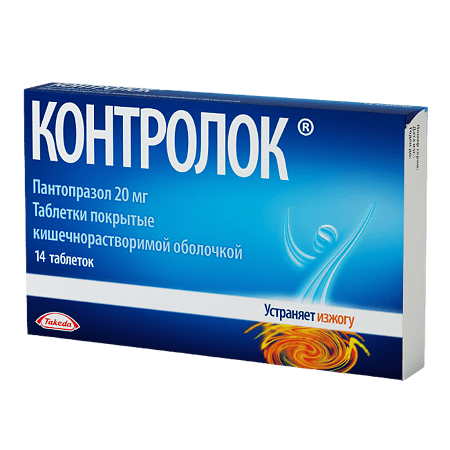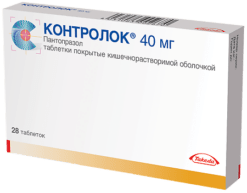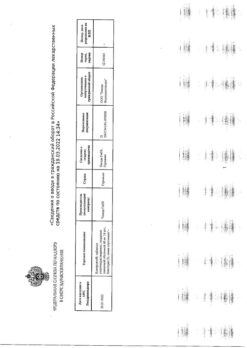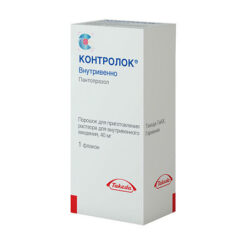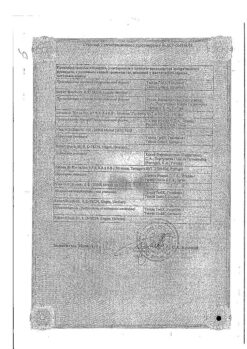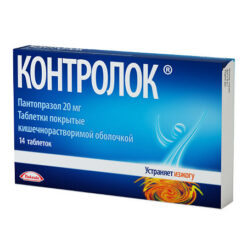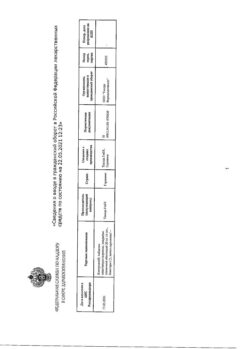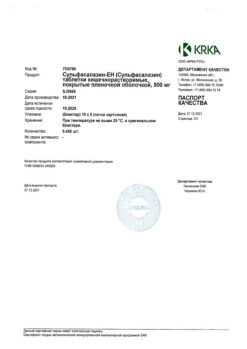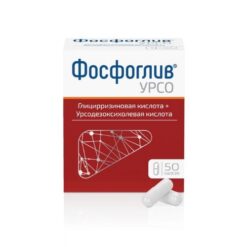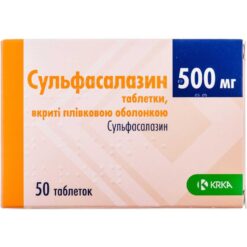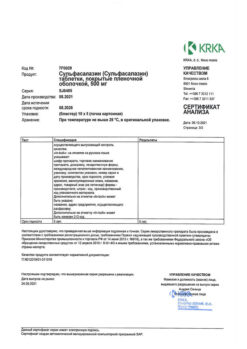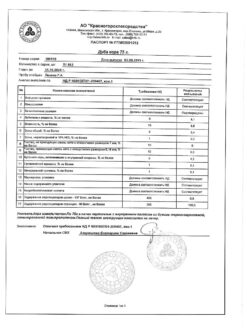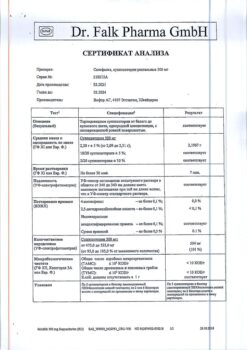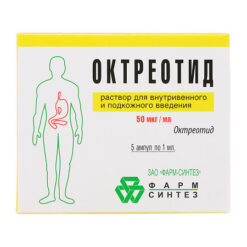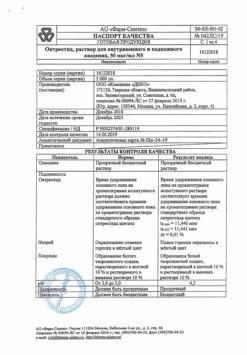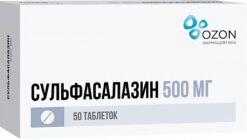No products in the cart.
Controlock, 40 mg 14 pcs
€14.15 €11.79
Description
Controlok is a proton pump inhibitor.
Pharmacodynamics
Proton pump inhibitor (H+-K+-ATPase). Blocks the final stage of hydrochloric acid secretion, reducing basal and stimulated secretion, regardless of the nature of the stimulus.
Antisecretory activity. After oral administration of 20 mg of Controlock® antisecretory effect occurs after 1 hour and reaches a maximum after 2-4 hours. With intravenous administration of 80 mg the antisecretory effect reaches its maximum within 1 hour and lasts for 24 hours. In duodenal ulcer associated with Helicobacter pylori, decreased gastric secretion increases the sensitivity of microorganisms to antibiotics. It does not affect gastrointestinal motility. The secretory activity is normalized in 3-4 days after the end of administration.
Compared with other proton pump inhibitors, Controlock® has greater chemical stability at neutral pH, and less potential for interaction with cytochrome P450-dependent liver oxidase system. Therefore, Controlok does not interact with many other common drugs.
Pharmacokinetics
Pantoprazole is rapidly absorbed after oral administration. Cmax in plasma with oral administration is reached after the first dose of 20 or 40 mg. On average, Cmax equal to 1-1.5 mcg/ml is reached after 2-2.5 h for 20 mg doses and 2.0-3.0 mcg/ml after 2.5 h for 40 mg doses. This value remains constant after multiple uses of this drug.
Vd is 0.15 L/kg, clearance is 0.1 L/h/kg.
T1/2 is 1 hour.
The pharmacokinetics are the same after both single and multiple applications of the drug.
The binding of pantoprazole to plasma proteins is 98%. It is metabolized in the liver. The main route of excretion is through the kidneys (about 80%) as metabolites of pantoprazole, a small amount is excreted with the feces. The main metabolite in blood plasma and urine is desmethylpantoprazole, conjugating with sulfate.
The absolute bioavailability of pantoprazole tablets is 77%. Their concomitant use with food has no effect on the AUC and Cmax.
When using pantoprazole in patients with limited renal function (including patients on hemodialysis), no dose reduction is required. As in healthy patients, the T1/2 of pantoprazole is short. Only a very small portion of the drug is dialyzed. It does not cumulate.
In patients with cirrhosis (Child-Pugh grades A and B), the T1/2 is increased to 3-6 h when pantoprazole is used at 20 mg and to 7-9 h when pantoprazole is used at 40 mg. AUC increases 3-5-fold (for 20 mg dosage) and 5-7-fold (for 40 mg dosage). Cmax is increased 1.3-fold (for 20 mg dosage) and 1.5-fold (for 40 mg dosage) compared to healthy patients. Slight increases in AUC and Cmax in the elderly are not clinically significant.
Indications
Indications
Peptic ulcer of the stomach and duodenum (in the acute phase), erosive gastritis (including those associated with taking NSAIDs).
Gastroesophageal reflux disease (GERD): treatment of erosive reflux esophagitis, symptomatic treatment of non-erosive reflux disease (NERD).
Zollinger-Ellison syndrome.
Eradication of Helicobacter pylori in combination with antibacterial agents.
Treatment and prevention of stress ulcers, as well as their complications in the form of bleeding, perforation, penetration (for solution for intravenous administration).
Pharmacological effect
Pharmacological effect
Controloc is a proton pump inhibitor.
Pharmacodynamics
Proton pump inhibitor (H+-K+-ATPase). Blocks the final stage of hydrochloric acid secretion, reducing basal and stimulated secretion, regardless of the nature of the stimulus.
Antisecretory activity. After oral administration of 20 mg of the drug Controloc®, the antisecretory effect occurs within 1 hour and reaches a maximum after 2–4 hours. With intravenous administration of 80 mg, the antisecretory effect reaches a maximum within 1 hour and lasts 24 hours. In case of duodenal ulcer associated with Helicobacter pylori, a decrease in gastric secretion increases the sensitivity of microorganisms to antibiotics. Does not affect gastrointestinal motility. Secretory activity returns to normal 3–4 days after the end of administration.
Compared to other proton pump inhibitors, Controloc® has greater chemical stability at neutral pH, and a lower potential for interaction with the liver oxidase system, which is dependent on cytochrome P450. Therefore, Controloc does not interact with many other common drugs.
Pharmacokinetics
Pantoprazole is rapidly absorbed after oral administration. Cmax in blood plasma when administered orally is achieved after the first dose of 20 or 40 mg. On average, Cmax of 1–1.5 mcg/ml is achieved after 2–2.5 hours for a 20 mg dosage and 2.0–3.0 mcg/ml after 2.5 hours for a 40 mg dosage. This indicator remains constant after repeated use of this drug.
Vd is 0.15 l/kg, clearance is 0.1 l/h/kg.
T1/2 – 1 hour.
Pharmacokinetics are the same after both single and repeated use of the drug.
The binding of pantoprazole to plasma proteins is 98%. Metabolized in the liver. The main route of excretion is through the kidneys (about 80%) in the form of pantoprazole metabolites, and is excreted in small amounts in feces. The main metabolite in blood plasma and urine is desmethylpantoprazole, which is conjugated with sulfate.
The absolute bioavailability of pantoprazole tablets is 77%. Their simultaneous use with food does not affect AUC and Cmax.
When using pantoprazole in patients with limited renal function (including patients on hemodialysis), no dose reduction is required. As in healthy patients, T1/2 of pantoprazole is short. Only a very small portion of the drug is dialyzed. Does not cumulate.
In patients with liver cirrhosis (classes A and B according to the Child-Pugh classification), T1/2 increases to 3-6 hours when using pantoprazole at a dosage of 20 mg and up to 7-9 hours when using pantoprazole at a dosage of 40 mg. AUC increases by 3–5 times (for a dosage of 20 mg) and by 5–7 times (for a dosage of 40 mg). Cmax increases by 1.3 times (for a dosage of 20 mg) and 1.5 times (for a dosage of 40 mg) compared with healthy patients. The slight increase in AUC and Cmax in the elderly is not clinically significant.
Special instructions
Special instructions
Before starting treatment with Controloc®, the presence of a malignant neoplasm should be excluded, since the drug may mask symptoms and delay the correct diagnosis.
Active ingredient
Active ingredient
Pantoprazole
Composition
Composition
1 tablet contains:
Active substances:
pantoprazole sodium sesquihydrate 22.57 mg (corresponding to 20 mg pantoprazole);
pantoprazole sodium sesquihydrate 45.1 mg (corresponding to 40 mg pantoprazole);
Excipients:
sodium carbonate anhydrous;
mannitol;
crospovidone;
povidone K90;
calcium stearate;
purified water;
Shell:
hypromellose 2910; povidone K25; titanium dioxide (E171); iron oxide yellow (E172); propylene glycol; Eudragit L 30D-55 (methacrylic acid and ethyl acrylate copolymer, polysorbate 80, sodium lauryl sulfate); triethyl citrate.
Contraindications
Contraindications
Hypersensitivity; dyspepsia of neurotic origin (tablets).
With caution: pregnancy, lactation, liver failure.
Side Effects
Side Effects
Typical: pain in the upper abdomen, diarrhea, constipation, flatulence; headache.
Atypical: nausea/vomiting, dizziness, blurred vision (blurred vision); allergic reactions such as itching and skin rash.
Rare: dry mouth, arthralgia, depression, hallucinations, disorientation and confusion, especially in patients predisposed to this, as well as an increase in these symptoms if they have previously been observed in patients.
Very rare: leukopenia, thrombocytopenia; thrombophlebitis at the injection site (powder for preparing a solution for intravenous administration); peripheral edema; severe hepatocellular damage leading to jaundice with or without liver failure; anaphylactic reactions, including anaphylactic shock; increased liver enzymes (transaminases, glutamyl transpeptidase); increased triglycerides; increased body temperature; myalgia, interstitial nephritis; urticaria, angioedema; severe skin reactions such as Stevens-Johnson syndrome, erythema multiforme, photosensitivity, Lyell’s syndrome.
Interaction
Interaction
The simultaneous use of Controloc® may reduce the absorption of drugs whose bioavailability depends on the pH of the stomach (for example, iron salts, ketoconazole).
Controloc®, unlike other proton pump inhibitors, can be prescribed without the risk of drug interactions:
patients with cardiovascular diseases taking cardiac glycosides (digoxin), CCBs (nifedipine), β-blockers (metoprolol);
patients with gastrointestinal diseases taking antacids, antibiotics (amoxicillin, clarithromycin);
patients taking oral contraceptives;
patients taking NSAIDs (diclofenac, phenazone, naproxen, piroxicam);
patients with diseases of the endocrine system taking glibenclamide, levothyroxine;
patients with anxiety and sleep disorders taking diazepam;
patients with epilepsy taking carbamazepine and phenytoin;
patients taking indirect anticoagulants such as warfarin and phenprocoumon;
transplant patients taking cyclosporine, tacrolimus.
There was also no drug interaction with theophylline, caffeine and ethanol.
Possible interaction with atazanavir and ritonavir (tablets).
Overdose
Overdose
To date, no overdose phenomena have been observed as a result of using the drug Controloc. Doses up to 240 mg were administered intravenously over 2 minutes and were well tolerated.
However, in case of overdose and only in the presence of clinical manifestations (possible increase in side effects), symptomatic and supportive treatment is carried out.
Pantoprazole is not eliminated by hemodialysis.
Storage conditions
Storage conditions
At a temperature not exceeding 25 °C
Shelf life
Shelf life
3 years
Manufacturer
Manufacturer
Takeda GmbH, Germany
Additional information
| Shelf life | 3 years |
|---|---|
| Conditions of storage | At a temperature not exceeding 25 °C |
| Manufacturer | Takeda GmbH, Germany |
| Medication form | enteric soluble tablets |
| Brand | Takeda GmbH |
Other forms…
Related products
Buy Controlock, 40 mg 14 pcs with delivery to USA, UK, Europe and over 120 other countries.

